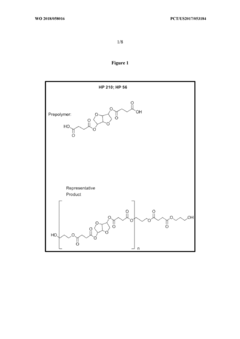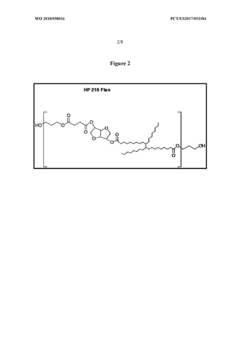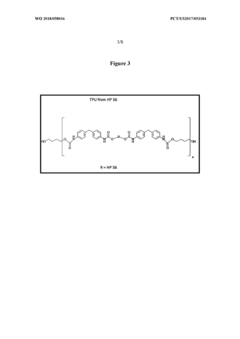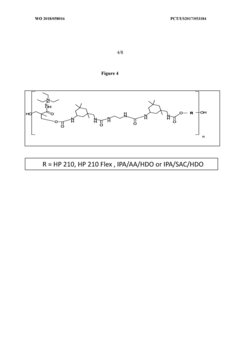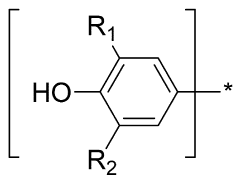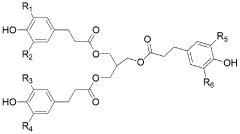Exploring Regenerative Polyurethane Systems
JUN 25, 20259 MIN READ
Generate Your Research Report Instantly with AI Agent
Patsnap Eureka helps you evaluate technical feasibility & market potential.
Regenerative PU Evolution
The evolution of regenerative polyurethane systems represents a significant shift in the field of polymer science and materials engineering. This technological progression has been driven by the increasing demand for sustainable and environmentally friendly materials across various industries. The journey of regenerative polyurethanes began in the late 20th century when researchers started exploring ways to enhance the recyclability and biodegradability of conventional polyurethanes.
In the early stages, efforts were focused on developing polyurethane formulations that could be more easily broken down into their constituent components. This led to the introduction of chemically recyclable polyurethanes in the 1990s, which allowed for the recovery of raw materials through chemical processes. However, these early systems often resulted in lower-quality recycled products and were energy-intensive.
The turn of the millennium saw a paradigm shift towards bio-based polyurethanes, utilizing renewable resources such as vegetable oils and natural polyols. This marked the beginning of truly regenerative polyurethane systems, as these materials could be produced from sustainable sources and potentially biodegraded at the end of their life cycle.
A major breakthrough came in the mid-2000s with the development of self-healing polyurethanes. These materials incorporated dynamic covalent bonds or supramolecular interactions, allowing them to repair damage autonomously. This innovation significantly extended the lifespan of polyurethane products and reduced the need for replacements.
The past decade has witnessed rapid advancements in regenerative polyurethane technology. Researchers have successfully created fully recyclable polyurethane networks that can be depolymerized and repolymerized multiple times without significant loss of properties. This has been achieved through the incorporation of reversible chemical linkages and the use of catalytic systems that facilitate controlled degradation and reformation.
Recent developments have focused on enhancing the biodegradability of polyurethanes while maintaining their desirable mechanical properties. This has led to the creation of hybrid systems that combine bio-based components with synthetic elements, offering a balance between performance and environmental sustainability.
The latest frontier in regenerative polyurethane evolution involves the integration of smart technologies. Self-diagnosing and self-repairing systems are being developed, which can detect damage and initiate repair processes autonomously. Additionally, researchers are exploring the potential of 3D-printable regenerative polyurethanes, which could revolutionize manufacturing processes and enable on-demand production of customized, sustainable materials.
In the early stages, efforts were focused on developing polyurethane formulations that could be more easily broken down into their constituent components. This led to the introduction of chemically recyclable polyurethanes in the 1990s, which allowed for the recovery of raw materials through chemical processes. However, these early systems often resulted in lower-quality recycled products and were energy-intensive.
The turn of the millennium saw a paradigm shift towards bio-based polyurethanes, utilizing renewable resources such as vegetable oils and natural polyols. This marked the beginning of truly regenerative polyurethane systems, as these materials could be produced from sustainable sources and potentially biodegraded at the end of their life cycle.
A major breakthrough came in the mid-2000s with the development of self-healing polyurethanes. These materials incorporated dynamic covalent bonds or supramolecular interactions, allowing them to repair damage autonomously. This innovation significantly extended the lifespan of polyurethane products and reduced the need for replacements.
The past decade has witnessed rapid advancements in regenerative polyurethane technology. Researchers have successfully created fully recyclable polyurethane networks that can be depolymerized and repolymerized multiple times without significant loss of properties. This has been achieved through the incorporation of reversible chemical linkages and the use of catalytic systems that facilitate controlled degradation and reformation.
Recent developments have focused on enhancing the biodegradability of polyurethanes while maintaining their desirable mechanical properties. This has led to the creation of hybrid systems that combine bio-based components with synthetic elements, offering a balance between performance and environmental sustainability.
The latest frontier in regenerative polyurethane evolution involves the integration of smart technologies. Self-diagnosing and self-repairing systems are being developed, which can detect damage and initiate repair processes autonomously. Additionally, researchers are exploring the potential of 3D-printable regenerative polyurethanes, which could revolutionize manufacturing processes and enable on-demand production of customized, sustainable materials.
Market Demand Analysis
The market demand for regenerative polyurethane systems has been steadily growing in recent years, driven by increasing environmental concerns and the push for sustainable materials across various industries. This innovative technology addresses the critical need for reducing plastic waste and improving the recyclability of polyurethane-based products.
In the automotive sector, there is a significant demand for regenerative polyurethane systems in the production of lightweight, durable, and recyclable components. As automakers strive to meet stringent emissions regulations and improve fuel efficiency, the adoption of these advanced materials is expected to accelerate. The construction industry also presents a substantial market opportunity, with regenerative polyurethanes finding applications in insulation, sealants, and structural components that can be easily recycled or repurposed at the end of their lifecycle.
The furniture and bedding industry has shown keen interest in regenerative polyurethane systems, particularly for foam production. Consumers are increasingly seeking eco-friendly options, driving manufacturers to explore sustainable alternatives to traditional polyurethane foams. This trend is likely to continue, creating a growing market for regenerative solutions in this sector.
In the packaging industry, there is a rising demand for sustainable materials that can replace single-use plastics. Regenerative polyurethane systems offer potential solutions for creating biodegradable or easily recyclable packaging materials, aligning with the global push to reduce plastic waste and promote circular economy principles.
The medical and healthcare sectors are also exploring the potential of regenerative polyurethane systems for developing biocompatible materials that can be used in various applications, from wound dressings to implantable devices. The ability to create materials with tailored properties and improved recyclability is particularly attractive in this high-value market segment.
Market analysts project that the global market for regenerative polyurethane systems will experience significant growth over the next decade. This growth is expected to be driven by stringent environmental regulations, increasing consumer awareness, and the ongoing shift towards sustainable manufacturing practices across industries.
However, challenges remain in terms of cost competitiveness and scalability of regenerative polyurethane technologies. As research and development efforts continue to address these issues, it is anticipated that the market demand will further expand, potentially disrupting traditional polyurethane markets and creating new opportunities for innovative products and applications.
In the automotive sector, there is a significant demand for regenerative polyurethane systems in the production of lightweight, durable, and recyclable components. As automakers strive to meet stringent emissions regulations and improve fuel efficiency, the adoption of these advanced materials is expected to accelerate. The construction industry also presents a substantial market opportunity, with regenerative polyurethanes finding applications in insulation, sealants, and structural components that can be easily recycled or repurposed at the end of their lifecycle.
The furniture and bedding industry has shown keen interest in regenerative polyurethane systems, particularly for foam production. Consumers are increasingly seeking eco-friendly options, driving manufacturers to explore sustainable alternatives to traditional polyurethane foams. This trend is likely to continue, creating a growing market for regenerative solutions in this sector.
In the packaging industry, there is a rising demand for sustainable materials that can replace single-use plastics. Regenerative polyurethane systems offer potential solutions for creating biodegradable or easily recyclable packaging materials, aligning with the global push to reduce plastic waste and promote circular economy principles.
The medical and healthcare sectors are also exploring the potential of regenerative polyurethane systems for developing biocompatible materials that can be used in various applications, from wound dressings to implantable devices. The ability to create materials with tailored properties and improved recyclability is particularly attractive in this high-value market segment.
Market analysts project that the global market for regenerative polyurethane systems will experience significant growth over the next decade. This growth is expected to be driven by stringent environmental regulations, increasing consumer awareness, and the ongoing shift towards sustainable manufacturing practices across industries.
However, challenges remain in terms of cost competitiveness and scalability of regenerative polyurethane technologies. As research and development efforts continue to address these issues, it is anticipated that the market demand will further expand, potentially disrupting traditional polyurethane markets and creating new opportunities for innovative products and applications.
Technical Challenges
The development of regenerative polyurethane systems faces several significant technical challenges that researchers and industry professionals are actively working to overcome. One of the primary obstacles is achieving a balance between the regenerative properties and the mechanical performance of the material. Traditional polyurethanes are known for their excellent mechanical strength, durability, and versatility, but incorporating self-healing or regenerative capabilities often compromises these desirable properties.
A major technical hurdle lies in the design of reversible chemical bonds that can facilitate the regeneration process without significantly altering the polymer's overall structure and functionality. While various approaches, such as the incorporation of dynamic covalent bonds or supramolecular interactions, have shown promise, optimizing these systems for practical applications remains challenging. The regeneration process must be efficient, repeatable, and occur under conditions that do not degrade other material properties.
Another critical challenge is the development of regenerative polyurethane systems that can operate effectively across a wide range of environmental conditions. Many current self-healing mechanisms are sensitive to factors such as temperature, humidity, and pH, limiting their applicability in diverse real-world scenarios. Researchers are striving to create more robust systems that can maintain their regenerative capabilities under varying conditions, which is crucial for expanding the potential applications of these materials.
The scalability of regenerative polyurethane production presents another significant technical obstacle. While many promising systems have been demonstrated at laboratory scales, translating these innovations into large-scale, cost-effective manufacturing processes remains a considerable challenge. This includes developing synthesis methods that are compatible with existing industrial processes and ensuring the consistency and reliability of the regenerative properties in mass-produced materials.
Furthermore, the long-term stability and durability of regenerative polyurethane systems are areas of ongoing concern. The repeated activation of self-healing mechanisms may lead to gradual degradation of the material's overall performance over time. Addressing this issue requires the development of more resilient regenerative systems that can maintain their efficacy through multiple healing cycles without compromising the material's structural integrity or functional properties.
Lastly, the environmental impact and sustainability of regenerative polyurethane systems pose both challenges and opportunities. While the ability to regenerate and extend the lifespan of materials aligns with sustainability goals, the chemical compositions and processes involved in creating these systems must also be environmentally friendly. Developing bio-based or easily recyclable regenerative polyurethanes that maintain high performance standards is a complex technical challenge that researchers are actively pursuing.
A major technical hurdle lies in the design of reversible chemical bonds that can facilitate the regeneration process without significantly altering the polymer's overall structure and functionality. While various approaches, such as the incorporation of dynamic covalent bonds or supramolecular interactions, have shown promise, optimizing these systems for practical applications remains challenging. The regeneration process must be efficient, repeatable, and occur under conditions that do not degrade other material properties.
Another critical challenge is the development of regenerative polyurethane systems that can operate effectively across a wide range of environmental conditions. Many current self-healing mechanisms are sensitive to factors such as temperature, humidity, and pH, limiting their applicability in diverse real-world scenarios. Researchers are striving to create more robust systems that can maintain their regenerative capabilities under varying conditions, which is crucial for expanding the potential applications of these materials.
The scalability of regenerative polyurethane production presents another significant technical obstacle. While many promising systems have been demonstrated at laboratory scales, translating these innovations into large-scale, cost-effective manufacturing processes remains a considerable challenge. This includes developing synthesis methods that are compatible with existing industrial processes and ensuring the consistency and reliability of the regenerative properties in mass-produced materials.
Furthermore, the long-term stability and durability of regenerative polyurethane systems are areas of ongoing concern. The repeated activation of self-healing mechanisms may lead to gradual degradation of the material's overall performance over time. Addressing this issue requires the development of more resilient regenerative systems that can maintain their efficacy through multiple healing cycles without compromising the material's structural integrity or functional properties.
Lastly, the environmental impact and sustainability of regenerative polyurethane systems pose both challenges and opportunities. While the ability to regenerate and extend the lifespan of materials aligns with sustainability goals, the chemical compositions and processes involved in creating these systems must also be environmentally friendly. Developing bio-based or easily recyclable regenerative polyurethanes that maintain high performance standards is a complex technical challenge that researchers are actively pursuing.
Current PU Regen Methods
01 Regenerative braking systems for electric vehicles
Regenerative polyurethane systems are utilized in electric vehicle braking systems to recover and store energy during deceleration. These systems convert kinetic energy into electrical energy, which is then stored in batteries for later use. This technology improves overall vehicle efficiency and extends the driving range of electric vehicles.- Regenerative braking systems in electric vehicles: Regenerative polyurethane systems are utilized in electric vehicle braking systems to recover and store energy during deceleration. These systems convert kinetic energy into electrical energy, which is then stored in batteries for later use, improving overall vehicle efficiency and range.
- Self-healing polyurethane materials: Advanced polyurethane systems with self-healing properties are being developed for various applications. These materials can repair minor damage autonomously, extending the lifespan of products and reducing maintenance requirements. The self-healing mechanism is typically triggered by heat, light, or mechanical stress.
- Regenerative polyurethane foams for automotive seating: Innovative polyurethane foam systems are being used in automotive seating applications. These foams can regenerate their shape and properties after compression, providing long-lasting comfort and support. The regenerative properties also contribute to improved durability and reduced wear over time.
- Polyurethane-based energy harvesting systems: Regenerative polyurethane systems are being developed for energy harvesting applications. These systems can convert mechanical energy from various sources, such as vibrations or pressure, into electrical energy. The harvested energy can be used to power small electronic devices or sensors in diverse environments.
- Regenerative polyurethane coatings: Advanced polyurethane coating systems with regenerative properties are being developed for various industries. These coatings can self-repair minor scratches or damage, maintaining their protective and aesthetic properties over time. The regenerative mechanism is often activated by environmental factors such as heat or UV light.
02 Self-healing polyurethane materials
Advanced polyurethane systems with self-healing properties are being developed for various applications. These materials can repair minor damage autonomously, extending the lifespan of products and reducing maintenance requirements. Self-healing polyurethanes are particularly useful in automotive, construction, and industrial applications.Expand Specific Solutions03 Polyurethane-based energy harvesting systems
Innovative polyurethane systems are being used to create energy harvesting devices. These systems can convert mechanical energy from vibrations, movements, or pressure into electrical energy. Such technology has applications in wearable devices, sensors, and IoT devices, providing a sustainable power source for low-energy electronics.Expand Specific Solutions04 Adaptive polyurethane systems for automotive seating
Advanced polyurethane systems are being developed for automotive seating applications. These systems can adapt to different user preferences and driving conditions, providing enhanced comfort and support. The technology may include features such as adjustable firmness, temperature regulation, and posture correction.Expand Specific Solutions05 Eco-friendly regenerative polyurethane production
Sustainable methods for producing regenerative polyurethane systems are being researched and implemented. These processes focus on using renewable resources, reducing waste, and incorporating recycled materials. The aim is to create more environmentally friendly polyurethane products while maintaining or improving their performance characteristics.Expand Specific Solutions
Key Industry Players
The exploration of regenerative polyurethane systems is in a growth phase, with increasing market size and technological advancements. The global market for these systems is expanding due to their sustainable nature and diverse applications. Technologically, the field is progressing rapidly, with varying levels of maturity among key players. Companies like Covestro Deutschland AG, BASF Corp., and Evonik Operations GmbH are at the forefront, demonstrating advanced capabilities in developing innovative regenerative polyurethane solutions. Other significant contributors include Dow Global Technologies LLC and DuPont de Nemours, Inc., who are leveraging their extensive R&D resources to push the boundaries of this technology. Emerging players such as Resinate Materials Group, Inc. are also making notable strides, indicating a dynamic and competitive landscape in this evolving sector.
Covestro Deutschland AG
Technical Solution: Covestro has pioneered a regenerative polyurethane system called INSQIN®. This water-based technology enables the production of synthetic materials without the use of solvents. The system incorporates bio-based raw materials and allows for the creation of polyurethane coatings that can be easily separated from textiles at the end of their life cycle. This facilitates the recycling of both the textile and the polyurethane coating. Additionally, Covestro has developed a chemical recycling process for flexible polyurethane foams, enabling the recovery of the original polyol component for reuse in new polyurethane products.
Strengths: Solvent-free production, improved recyclability, use of bio-based materials. Weaknesses: May have limitations in certain high-performance applications, potential higher initial investment costs.
BASF Corp.
Technical Solution: BASF has developed a novel regenerative polyurethane system called Elastollan® R. This system incorporates recycled polyurethane materials into new products without compromising performance. The process involves chemically breaking down post-consumer polyurethane waste, purifying the resulting materials, and then reincorporating them into new polyurethane formulations. This closed-loop approach allows for the creation of high-quality polyurethane products with up to 20% recycled content, significantly reducing the environmental impact of polyurethane production.
Strengths: Reduces virgin material use, lowers carbon footprint, maintains product quality. Weaknesses: Limited recycled content percentage, potential higher production costs.
Innovative PU Tech Review
Biorenewable high performance polyester polyols
PatentWO2018058016A1
Innovation
- A process for manufacturing polyester polyols with high biorenewable content using polyfunctional carboxylic acids and polyhydric alcohols derived from biological sources, such as succinic acid and 1,3-propanediol, to produce high-performance polyurethane systems with superior mechanical properties.
Self-healing and recyclable polyurethane polymer
PatentWO2023158225A1
Innovation
- A self-healing and recyclable polyurethane polymer is developed using ester-based compounds with hindered phenol groups and polyfunctional isocyanates, incorporating reversible dynamic covalent bonds to enable self-healing at lower temperatures and facilitate recycling by controlling the degree of steric hindrance and hydroxy functional group content.
Environmental Impact
The environmental impact of regenerative polyurethane systems is a critical aspect to consider in their development and implementation. These innovative materials offer significant potential for reducing the ecological footprint of traditional polyurethanes, which have long been associated with environmental concerns due to their petroleum-based origins and limited recyclability.
Regenerative polyurethane systems aim to address these issues by incorporating bio-based feedstocks and designing for circularity. The use of renewable resources, such as plant-derived polyols, can substantially decrease the reliance on fossil fuels and reduce greenhouse gas emissions associated with raw material production. This shift towards bio-based inputs not only conserves non-renewable resources but also contributes to carbon sequestration during the growth phase of the biomass used.
One of the most significant environmental benefits of regenerative polyurethanes is their potential for improved end-of-life management. Traditional polyurethanes often end up in landfills or are incinerated, releasing harmful substances into the environment. In contrast, regenerative systems are designed with recyclability and biodegradability in mind, allowing for more sustainable disposal options and reducing waste accumulation.
The production processes for regenerative polyurethanes also tend to be less energy-intensive and generate fewer harmful byproducts compared to conventional methods. This results in a lower overall environmental impact throughout the material's lifecycle. Additionally, the durability and performance characteristics of these materials can lead to longer-lasting products, further reducing the need for frequent replacements and the associated resource consumption.
However, it is important to note that the environmental benefits of regenerative polyurethane systems are not without challenges. The cultivation of bio-based feedstocks may compete with food crops for land use, potentially leading to deforestation or other land-use changes if not managed sustainably. Furthermore, the processing of these bio-based materials may still require energy and chemical inputs, which must be carefully optimized to ensure a net positive environmental impact.
As the technology advances, life cycle assessments (LCAs) will play a crucial role in quantifying the environmental benefits and identifying areas for improvement in regenerative polyurethane systems. These assessments will help guide the development of more sustainable production methods and end-of-life strategies, ensuring that the environmental advantages of these materials are maximized throughout their entire lifecycle.
Regenerative polyurethane systems aim to address these issues by incorporating bio-based feedstocks and designing for circularity. The use of renewable resources, such as plant-derived polyols, can substantially decrease the reliance on fossil fuels and reduce greenhouse gas emissions associated with raw material production. This shift towards bio-based inputs not only conserves non-renewable resources but also contributes to carbon sequestration during the growth phase of the biomass used.
One of the most significant environmental benefits of regenerative polyurethanes is their potential for improved end-of-life management. Traditional polyurethanes often end up in landfills or are incinerated, releasing harmful substances into the environment. In contrast, regenerative systems are designed with recyclability and biodegradability in mind, allowing for more sustainable disposal options and reducing waste accumulation.
The production processes for regenerative polyurethanes also tend to be less energy-intensive and generate fewer harmful byproducts compared to conventional methods. This results in a lower overall environmental impact throughout the material's lifecycle. Additionally, the durability and performance characteristics of these materials can lead to longer-lasting products, further reducing the need for frequent replacements and the associated resource consumption.
However, it is important to note that the environmental benefits of regenerative polyurethane systems are not without challenges. The cultivation of bio-based feedstocks may compete with food crops for land use, potentially leading to deforestation or other land-use changes if not managed sustainably. Furthermore, the processing of these bio-based materials may still require energy and chemical inputs, which must be carefully optimized to ensure a net positive environmental impact.
As the technology advances, life cycle assessments (LCAs) will play a crucial role in quantifying the environmental benefits and identifying areas for improvement in regenerative polyurethane systems. These assessments will help guide the development of more sustainable production methods and end-of-life strategies, ensuring that the environmental advantages of these materials are maximized throughout their entire lifecycle.
Regulatory Framework
The regulatory framework surrounding regenerative polyurethane systems is complex and multifaceted, reflecting the diverse applications and potential environmental impacts of these materials. At the international level, the United Nations Environment Programme (UNEP) has established guidelines for sustainable chemistry, which influence the development and use of regenerative polyurethanes. These guidelines emphasize the importance of life cycle assessments and the promotion of circular economy principles in chemical production.
In the European Union, the REACH (Registration, Evaluation, Authorization, and Restriction of Chemicals) regulation plays a crucial role in governing the use of polyurethane systems. REACH requires manufacturers to register chemicals and provide safety data, which has led to increased scrutiny of polyurethane components and their environmental effects. The EU's Circular Economy Action Plan also impacts the regulatory landscape for regenerative polyurethanes, promoting design for recyclability and the use of recycled materials in production.
The United States Environmental Protection Agency (EPA) regulates polyurethanes under the Toxic Substances Control Act (TSCA). Recent amendments to TSCA have increased the EPA's authority to evaluate and regulate chemicals, potentially affecting the development and use of regenerative polyurethane systems. Additionally, individual states like California have implemented their own regulations, such as Proposition 65, which requires businesses to provide warnings about significant exposures to chemicals that cause cancer, birth defects, or other reproductive harm.
In Asia, countries like China and Japan have been strengthening their chemical regulations. China's Measures for Environmental Management of New Chemical Substances and Japan's Chemical Substances Control Law both have implications for the development and use of regenerative polyurethanes. These regulations often focus on risk assessment and the management of potentially hazardous substances.
Industry-specific regulations also play a significant role in shaping the regulatory landscape for regenerative polyurethanes. For instance, in the automotive sector, regulations on vehicle emissions and fuel efficiency indirectly influence the development of lightweight materials, including advanced polyurethane systems. Similarly, in the construction industry, building codes and energy efficiency standards impact the use of polyurethane insulation materials.
As sustainability becomes an increasingly important focus globally, many countries are implementing extended producer responsibility (EPR) programs. These programs hold manufacturers responsible for the entire lifecycle of their products, including disposal and recycling. Such initiatives are likely to drive innovation in regenerative polyurethane systems, encouraging the development of more easily recyclable and biodegradable formulations.
In the European Union, the REACH (Registration, Evaluation, Authorization, and Restriction of Chemicals) regulation plays a crucial role in governing the use of polyurethane systems. REACH requires manufacturers to register chemicals and provide safety data, which has led to increased scrutiny of polyurethane components and their environmental effects. The EU's Circular Economy Action Plan also impacts the regulatory landscape for regenerative polyurethanes, promoting design for recyclability and the use of recycled materials in production.
The United States Environmental Protection Agency (EPA) regulates polyurethanes under the Toxic Substances Control Act (TSCA). Recent amendments to TSCA have increased the EPA's authority to evaluate and regulate chemicals, potentially affecting the development and use of regenerative polyurethane systems. Additionally, individual states like California have implemented their own regulations, such as Proposition 65, which requires businesses to provide warnings about significant exposures to chemicals that cause cancer, birth defects, or other reproductive harm.
In Asia, countries like China and Japan have been strengthening their chemical regulations. China's Measures for Environmental Management of New Chemical Substances and Japan's Chemical Substances Control Law both have implications for the development and use of regenerative polyurethanes. These regulations often focus on risk assessment and the management of potentially hazardous substances.
Industry-specific regulations also play a significant role in shaping the regulatory landscape for regenerative polyurethanes. For instance, in the automotive sector, regulations on vehicle emissions and fuel efficiency indirectly influence the development of lightweight materials, including advanced polyurethane systems. Similarly, in the construction industry, building codes and energy efficiency standards impact the use of polyurethane insulation materials.
As sustainability becomes an increasingly important focus globally, many countries are implementing extended producer responsibility (EPR) programs. These programs hold manufacturers responsible for the entire lifecycle of their products, including disposal and recycling. Such initiatives are likely to drive innovation in regenerative polyurethane systems, encouraging the development of more easily recyclable and biodegradable formulations.
Unlock deeper insights with Patsnap Eureka Quick Research — get a full tech report to explore trends and direct your research. Try now!
Generate Your Research Report Instantly with AI Agent
Supercharge your innovation with Patsnap Eureka AI Agent Platform!
